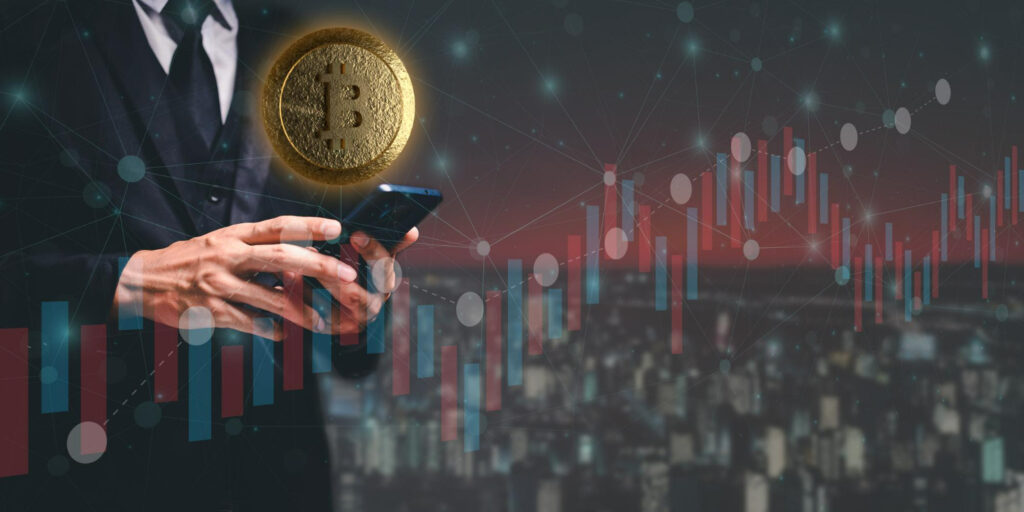The world is moving towards a digital future. That is unstoppable. Our memories and essential documents can be stored in digital format and preserved on a computer or another storage device. With the advancement of the Internet and cryptography, many people started working on internet-native money systems (like Hash Cash, Bit Gold, Bitcoin, and tokens).
The potential to transact with one another is a core part of an individual’s liberty. All of us possess valuable things. But the word ‘valuable ‘ is a very personalized term. What might be valuable to one person could be a throwaway to another. The conventional monetary system cannot estimate things or ‘assets’ due to its intuitive nature. Every asset has an economic value. Therefore, here you go with a brief discussion to draw a line between what is monetary and non-monetary assets.
What are monetary assets?
A monetary asset is a tangible asset with its stated value, or the stated value is convertible into a fixed amount of cash. It also refers to a short-term asset that can be dissolved easily and quickly, like cash and short-term investments.
The monetary assets of any company are of great importance because it is the measure of liquidity. If we fractionate the monetary assets by the current liabilities, the ratio obtained is known as the quick ratio. The quick ratio is the most effective way to measure an entity’s liquidity. The ratio is directly proportional to the company’s liquidity position.
Their value is fixed in monetary terms but may result in a decrease in the actual value. Therefore a change in objective value is possible in monetary digital assets, i.e., the purchasing power of a monetary item can change; however, there is no change in the face value or the cash value of the asset.
Monetary assets owned by a business company include cash in hand, cash convertibles, cash in the bank, short-term loans, investment, lease investments, receivables, and trade receivables.
Characteristics of monetary assets
The monetary assets are tangible, and their rates don’t change. Here are some of the characteristics of monetary assets as follows:
Change in real terms: We have described the character of monetary assets as their face value remains constant and their dollar value never changes, which means it is static. However, such an asset might fluctuate in real terms.
Translation in financial statements: The second characteristic of the monetary asset is their declaration in the financial statements. If you own a property or any other asset, its value will change due to devaluation, valuation, and many other economic factors. Therefore, every year’s financial statement updates the asset’s value.
It can be easily converted into cash at the time of need, helping the company in short-term investments.
A ready market for trading is available.
It can get implemented for the working capital cycle: These are used for paying cashiers and receipts from the borrower and giving current liabilities to employees and other persons. If a company holds sufficient monetary digital assets, it assures the cashier that their money is in safe hands and will get repaid in a time-bound manner.
It also assures shareholders that the company has a certain amount of volatile funds. In an emergency or financial crisis, the volatile fund helps the business stand and is a safety measure for shareholders.
Examples of Monetary digital assets
Examples of monetary assets include cash, bank deposits, trade receivables, receivables meant for settlement through cash, lease investment, etc.
Recently the majority of the central banks all over the world have been looking forward to introducing digital currencies. With the development of blockchain technology, the term ‘monetary digital assets’ has expanded and includes cryptocurrencies, NFTs, asset-backed tokens, security tokens, crypto assets, tokenized real estate, etc.
What are non-monetary digital assets?
What are the non-monetary assets? – A non-monetary asset is an asset whose value is not pre-defined at a fixed rate and can change accordingly over time; it cannot get readily converted into a fixed amount of money, unlike a monetary asset.
Non-monetary assets do not have a precise dollar value. Liabilities under non-monetary assets include those assignments that are not payable in cash and are also likely to change (like the value of property changes in response to several reasons such as demand and supply in the market concerning government regulations similar to the value of machinery, plant, or any factory equipment can significantly reduce due to obsoleteness with the introduction of new and advanced machinery).
Characteristics of non-monetary digital assets
Non-monetary means are non-salable, and their value changes over time. The change may result from deprecation, affectation, or request influence of force and order. Following are some of the characteristics of non-monetary assets:
Liquidity: Liquidity refers to how quickly an asset can get converted into cash without affecting the request value. Non-monetary means cannot be converted into cash unless there is a drastic price drop. It can be when the shareholder adjusts the selling price of its assets or due to less efficient market conditions where the asset gets regularly traded. Thus non-monetary assets are considered illiquid.
Cash translation: Non-monetary assets cannot be easily translated into cash or cash equivalents because they are subjective in their valuation, which depends on the course of market conditions, inflation, deflation, and other economic factors. Therefore it cannot get translated into a fixed dollar amount.
Applicability in the business: Non-monetary digital assets, such as property, factory equipment, plant, etc., are used to generate funds for the business in the long run. For example, a property cannot be instantly translated into ready cash in the short term but can generate gross revenue for the business.
Factors influencing the face value: The face value of monetary assets remains fixed, and there is only a change in relative terms due to a change in the present discounted value. In contrast, the cash value of non-monetary assets is not absolute. It changes depending upon the market influence, private and government sector demands, and the technological conditions of the period governed by the forces of demand and order.
Examples of non-monetary digital assets
Which items are not monetary items? – Examples of non-monetary assets include company property, fixed production assets, plant, factory equipment, machinery, market investments, intangible assets like goodwill, equity shares, biological assets, etc.
Digital non-monetary assets include the company’s intellectual property rights, such as patents, copyrights, inventory, and virtual currency, such as Bitcoin and trademarks. Non-monetary digital assets may include your laptop, mobile phone, storage devices, pen drives, etc.
Non-Monetary Assets vs. Monetary Assets
Monetary assets

- A financial product has an absolute cash value that does not fluctuate with time.
- Monetary assets have a fixed dollar value.
- Usually meant for daily funding operations of a business.
- Money or claims to receive a fixed amount of money.
- It can get easily converted into cash as per the requirement.
- The value of monetary items never gets restarted.
- These assets are highly volatile and have great acceptance as cash.
- Monetary assets are stated at the foreign exchange rate, and their distribution does not result in any tax allegation.
- Monetary exchange occurs when non monetary digital assets are acquired for monetary aspects or when non-monetary assets get disposed of in exchange for monetary assets.
- It includes current liability.
- It is tangible.
- Undertaking monetary assets during an inflation period will result in a decrease in purchasing power.
- One can retrieve monetary assets within a short period.
- There is no repayment option for changes in the value of money.
- Examples include investments in debt services, cash deposits, bank accounts, trade receivables, net investments in the tenancy, etc.
- Digital monetary items examples include cryptocurrencies, NFTs, tokenized real estate, etc.
Non-monetary assets
- A non-monetary asset changes its value with time and does not have a fixed currency rate.
- Non-monetary assets do not possess a fixed dollar value.
- It can generate future funds or revenue for a business. It refers to products or items used for future production.
- It cannot quickly turn into cash.
- The value of non-monetary items can be restarted.
- The non-monetary assets are less volatile and require time to be converted into ready cash.
- Non-monetary assets can be recorded on capital gain or loss and will get added to the income tax records.
- A non-monetary transaction or exchange occurs when a non-monetary asset gets exchanged for another non-monetary asset.
- It includes fixed liability.
- It is intangible.
- During inflation, the purchasing price gets adjusted.
- A non-monetary asset cannot get retrieved within a short period.
- A repayment option is available for changes in the value of money.
Non-monetary items examples include tangible assets, company property, patents, trademarks, copyrights, inventory, and market-linked investment.
The End Verdict
Determining their worth is critical in distinguishing assets from what is monetary and non-monetary. Assets with a constant and absolute value are known as monetary assets, whereas assets whose net value is determined based on market forces are known as non-monetary assets. Hence, the two primary components of differences between monetary and non–monetary assets are-
- Liquidity/volatility
- Change in a gross valuation
You can now look into a company’s financial statements and understand which monetary and non-monetary assets are. The monetary assets can get easily translated into cash and cash equivalents, short tenure investments, advances, etc., thus helping the company’s daily critical functioning. Intangible assets like non-monetary assets help stabilize the company’s funds and revenue for long-term services. Non-monetary assets are a part of infrastructure but are non-monetary because of more extended money time valuation.
These are of much importance for every company’s business organization. It is so because every business needs ready cash transactions to handle day-to-day affairs. We at Clocr ensure all your monetary and non-monetary assets are taken care of. Clocr helps you to create an online will and a social media will to take care of your digital and non-digital assets. Our estate planning solutions help you to excel and plan for the future. Visit clocr.com today.



